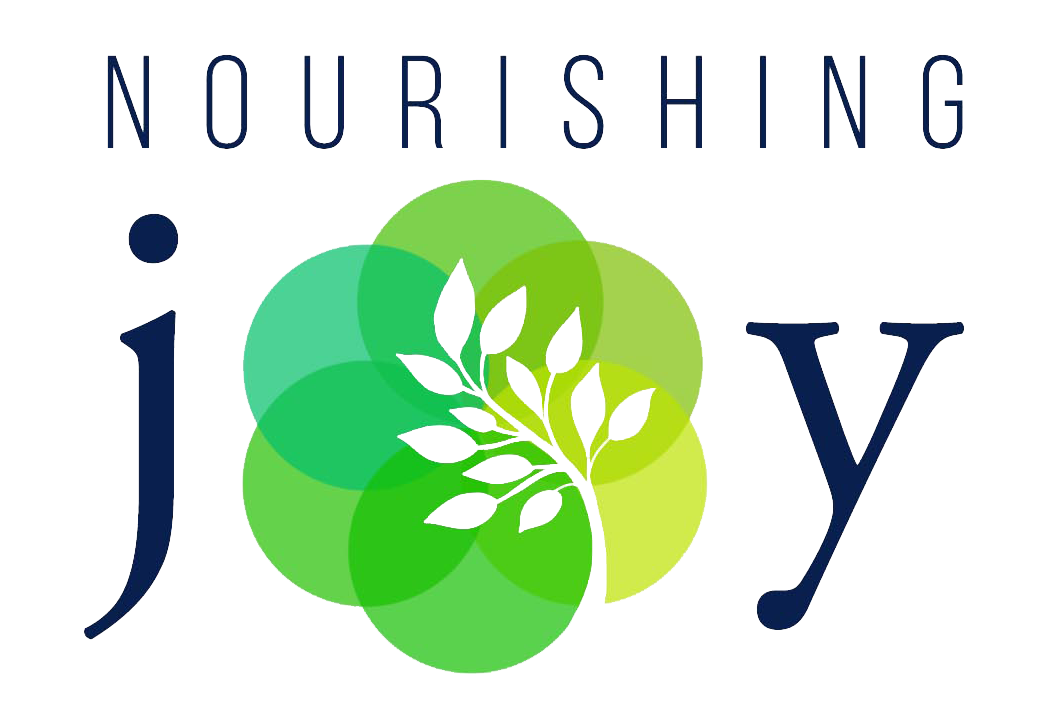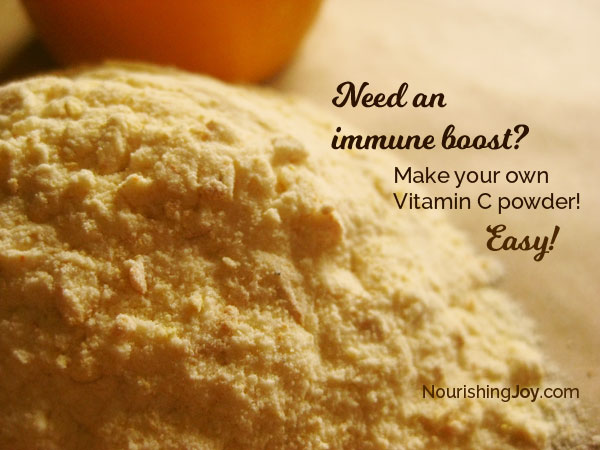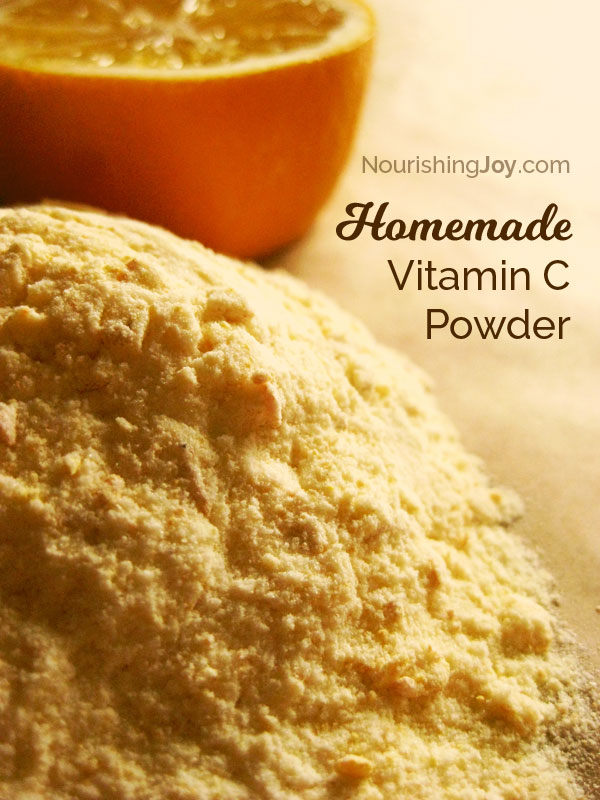Homemade Vitamin C Powder
This post may contain affiliate links, including those from Amazon.com, which means we earn a small commission off your purchases. And here's the thing: We only mention services and products that we think are truly worth your attention, whether they're free, paid, or otherwise. This site relies on YOUR trust, so if we don't stand behind a product 110%, it's not mentioned. Period.
Years ago, I posted my recipe for Homemade Chewable Gummy Vitamins, which I later updated to include homemade Vitamin C gummies for when you're really wanting to boost your immune system.
What I realized, however, is that I never posted my all-natural homemade Vitamin C powder to go with it! I mean, I mention using Vitamin C powder in that recipe, but who wants synthetic Vitamin C mixed with sweetener when you can easily make your own natural version?
(Well, don't think tooooooo highly of me here – I've used Emergen-C and other synthetic Vitamin C sources just as often as I've made the natural version, so just give yourself a pat on the back when you actually take the time to make the natural version. It's not difficult AT ALL – you just have to be willing to take the few minutes to cut up the peels and keep an eye on them while they dry.)
And what's especially odd about the fact that I haven't posted this recipe per se, is that I have posted it in a completely different form. Namely, I use this same method for making our non-toxic kitchen cleanser! Yet taking homemade Vitamin C powder as a supplement is a far more important use for ground up citrus peels than cleaning the kitchen sink, so go figure…..
Good thing citrus fruits are multi-functional. 🙂
So, how to make an all-natural Vitamin C powder? Basically, you dry out a few citrus peels, pulverize them into a powder, then use that as a natural supplement, either by stirring it into water (not my favorite way) or adding it to other foods, like the aforementioned gummies, yogurt, a spoonful of raw honey (great for sore throat), etc. when you need a boost or just want to help your maintain overall health.
And the thing is – citrus fruits are known for being a great source of natural Vitamin C, but the peels are where the nutrients are concentrated. For example, 100 grams of orange peel provides about 136 mg of vitamin C, while the fruit provides about 71 mg per 100 grams – that's nearly double! So, by ingesting the peels – pith and all – you take in far more bio-available Vitamin C than you do either eating the fruit or taking synthetic Vitamin C.
Ever wonder why your pee turns bright yellow when you take a high-dose of store-bought Vitamin C? That's because your body can't absorb it all, so it flushes it out of the system. The same can be true with naturally bio-available Vitamin C, but it absorbs much more before it reaches its level of saturation.
And by drying the peels out, you get the convenience of a powder that remains shelf stable for several months. 🙂
So, here you go: homemade Vitamin C powder.
How to Make Homemade Vitamin C Powder
Notes:
Organic fruit is a MUST in this application, since insecticide and pesticide residues may reside deep inside the peels due to multiple applications throughout the growing season, thus it's not always possible to wash those residues off.
You can use any citrus fruit for this application – oranges are certainly popular, but this will work with any citrus rinds. Grapefruit is a close second for me. 🙂
An even more fresh and potent way to benefit from the enzymes in the peel in addition to the Vitamin C is to add thinly sliced strips of peel to your smoothies or other purees – what a great way to boost immunity!
Method:
I usually count on one large navel orange (or any other kind with a thick rind) producing about 1/4 cup dried powder.
First, select organic fruit that is free of bruises and blemishes, then wash the fruit VERY thoroughly to remove agricultural residues, insect eggs, and other possible contaminants – yes, even from organic farms.
Next, remove the peels from the fruit, making sure as much as the pith comes with the outer peel as possible.
Third, dry the peels (see options below). The peels are done when they snap and break when bent.
To air-dry the peels, tear them into dime-sized pieces and let them sit for 3-4 days out on the counter.
To dehydrate the peels in a food dehydrator, slice the peels into thin strips, then place them in a dehydrator at 100ºF for 6-9 hours (time will vary widely depending on the thickness of the peel and the size of the pieces).
To dehydrate the peels in the oven, place them on a baking sheet and set in a slightly warm oven set on the absolutely lowest temperature it has. At about 150F, the peels will dry in 1 – 1 1/2 hours, depending on the thickness of the slices. When dry, remove from the oven and let cool.
When the peels are fully dry, place them in a spice grinder or blender and pulverize them into a fine powder.
Store in an air-tight container in a cool, dark place for up to three months or in the freezer for up to six months.






Kresha, this seems most wonderful. I’m thinking of encapsulating this, as my dear family is used to taking daily Vitamin C capsules. I know I won’t have the “official amount” to go by, but SURELY the homemade from real citrus peel variety is better than the capsules we are currently taking. Any ideas, help, input about this? Thanks for this great post. Have a lovely day.
Y’know, that’s a GREAT idea, if nothing else to avoid the additives that are usually put in capsules and pills.
But you’re right, I’m not sure either how to best calculate the values: the number I quote above from the USDA is for raw orange peel according to weight, but once the peel is dried, it weighs less, so perhaps weigh the raw peels before you start, weigh them again after they’re dry, determine the ratio between the two, then apply that ratio to the USDA measurements to determine an approximate amount per capsule?
Either way, encapsulating the powder sounds like a great way to have a natural, convenient Vitamin C on hand.
Thanks, Kresha. I’m excited–another great use for orange peels! Have a lovely evening.
I looks great and easy, so how to take it ? and how much ?
Thanks
You can use it any way you like: in smoothies, in capsules, in a glass of water, sprinkled over oatmeal – eat it in whatever way you like.
As for amount, again it’s pretty flexible, as it’s difficult to overdose unless you eat the equivalent of several dozen oranges (which would be several cups of powder). I would say for a daily dose for immune-boosting, aim for 2-4 tablespoons (either spread out across the day or all at once). For children, perhaps 1-2 tablespoons. But again, you’ll have to take fairly copious amounts over an extended period of time to do harm, so don’t sweat it too much.
And of course, the usual caveat is: this is assuming you’re a fairly healthy individual. If you know you have a chronic health issue, these recommendations may not apply.
I hope that helps!
I know that vitamin C is very sensitive to heat and to light, do you know how much vitamin C actually survives the dehydrating process?
Well, that depends on your dehydrator and your temperature. Some dehydrators provide a dark environment and an adjustable temperature, especially those that cater to the raw food community, which wants to make sure all food is processed below 112F so it retains all its vitamins and enzymes. The Excalibur models are an example of this.
If, however, you dry your peels in the oven with the door cracked open, which is the quickest method to dry peels, you won’t retain the same amount, although to answer your question, I don’t have actual numbers on how much is lost or denatured.
So, I don’t have a great answer for you, but just know that you can affect that outcome directly according to how you choose to dry them.
I hope that helps! 🙂
WARNING: Pesticides concentrate on the oils on the outside of the peels and cannot be washed off. Be sure to use only organic. There may also be radon and other types of radioactive isotopes depending on if they used gases to artificially ripen the oranges.
I’m sorry, but this will not work. C vitamin is volatile, so when you dehydrate whatever fruit you will 100% lose it (A vitamin is partially lost too).
That’s exactly why I call for dehydrating it at 100°F – below 112°F, which is the temperature at which all those precious volatile vitamins and enzymes will begin to breakdown. (And that’s also why my favorite method is merely to leave them sitting out at room temperature.) Obviously, in an oven, you can’t control temperature nearly so much, so there will be more loss, but just treat your fruit like you’re trying to keep it alive. 🙂
i put my vit c powder in a 00 size gelatin capsule .How do I determine potency of a capsule? Do I just base it off of the amt. of powder a capsule can hold? Used a small toaster oven. Took 14 hrs at 150 degrees. Removed it between time start and finish to use oven to heat other food. Should I just throw the skins away, since I used a higher temperature? Used lemon skins by the way.
I plan to make vitamin c powder for my cousin who has cancer.
When ground up in powder form how much do you typically take? I’m currently taking 3,000mg of vitamin C in pill form a day but would rather use a more natural method to boost my immune system and to correct some issues that have appeared due to my lack of vitamins and over abundance of sugar and caffeine over the years.
I typically take a tablespoon or three sprinkled over yogurt or in a smoothie. If you want a specific amount, other readers have had some great ideas in other comments on how to measure. 🙂
I hope that helps!
How many grams are in a tablespoon of this powder? How many Tablespoons will I have to take to get to 100 grams and in turn get my 136 grams of Vitamin C?
It seems like way too much powder to consume.
This may be a stupid question, but perhaps someone else might be wondering the same thing!
If you’ve squeezed the organic orange (or grapefruit in our case) for juice, can you also dry and use the leftover pulp and … segment linings (???) not sure what to call it???) the same way you do the peels?
Yes, absolutely! I don’t have nutritional info on those parts by themselves, but it would be a great way to boost what you’re getting from your fruit.
Great idea!
I was looking for this recipe it says i can use any citrus but i always seen it made by oranges. Still can I use lemons ? If i make it with lemon how much vitamin C will be in it ?
Great article! We just started our first batch of c powder air dryed inside and out on sunny days . Thicker skinned oranges take a little longer, our next venture is tangerine peels there thinner and its about 4 days to dry them out on a wire cooling rack 🙂
GREAT idea!
71/5000
Can you help me about making or extracting other vitamins?
LOL it is an old thread but.. I was looking for Recipes for healthy snacks/energy/Protein bars (OMG THE PRICES). Anyway, I was looking for “chocolate bar molds” and came across Gummie molds… HMMMM, I sat up and started looking for “Homemade Gummies”… OMG there are quite a few. So I started looking for “Vitamin/Healthy Gummy” things to add to them.. Again, OMG the Prices…. Sooo, I started looking for the things I could make on hand. And found You. We had already bought 1 bag each of Navel Oranges, Tangerines, and Limes. Now so far after half a day, ( literally 12hrs) of “Research” the only thing I have to buy is the Gelatin stuff.. But I’m not done yet.. Sooooooo sorry for making this Thank You so long.. Thank You for Sharing this